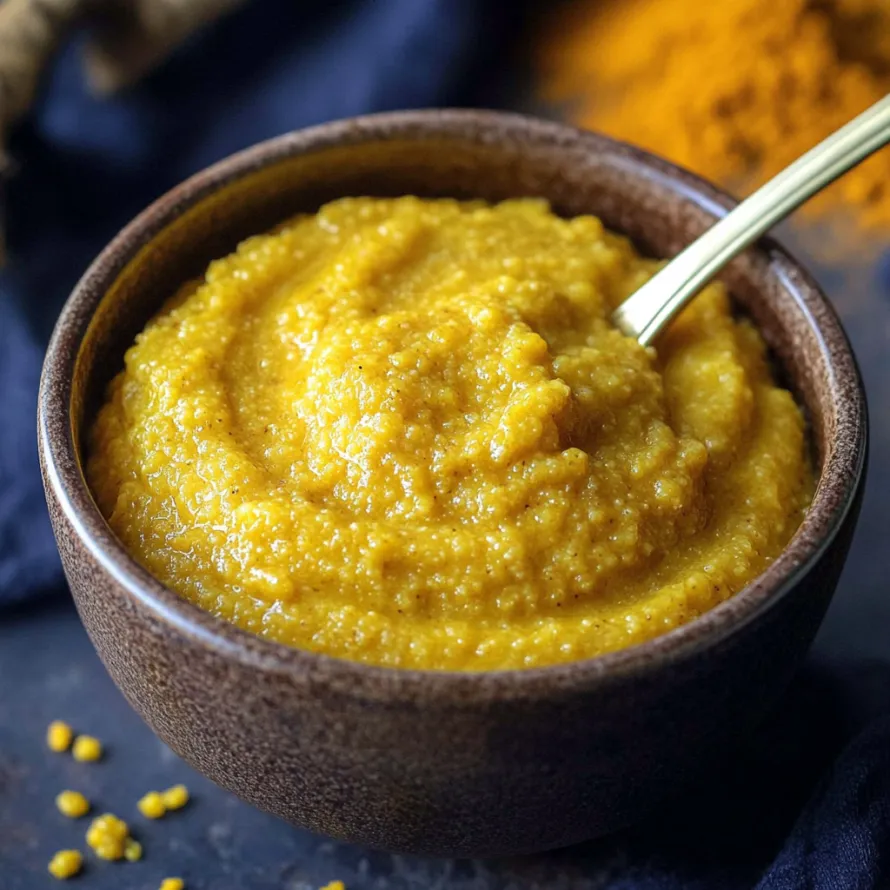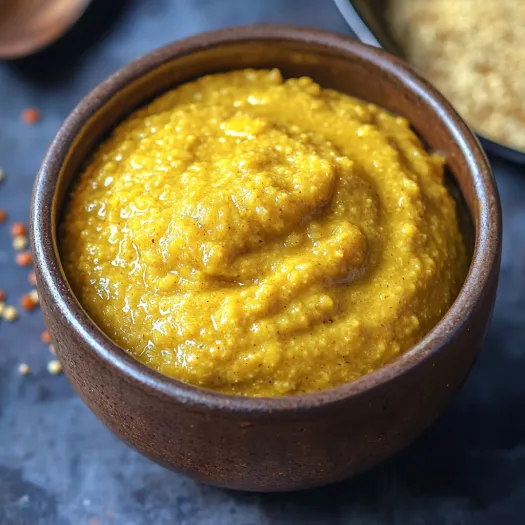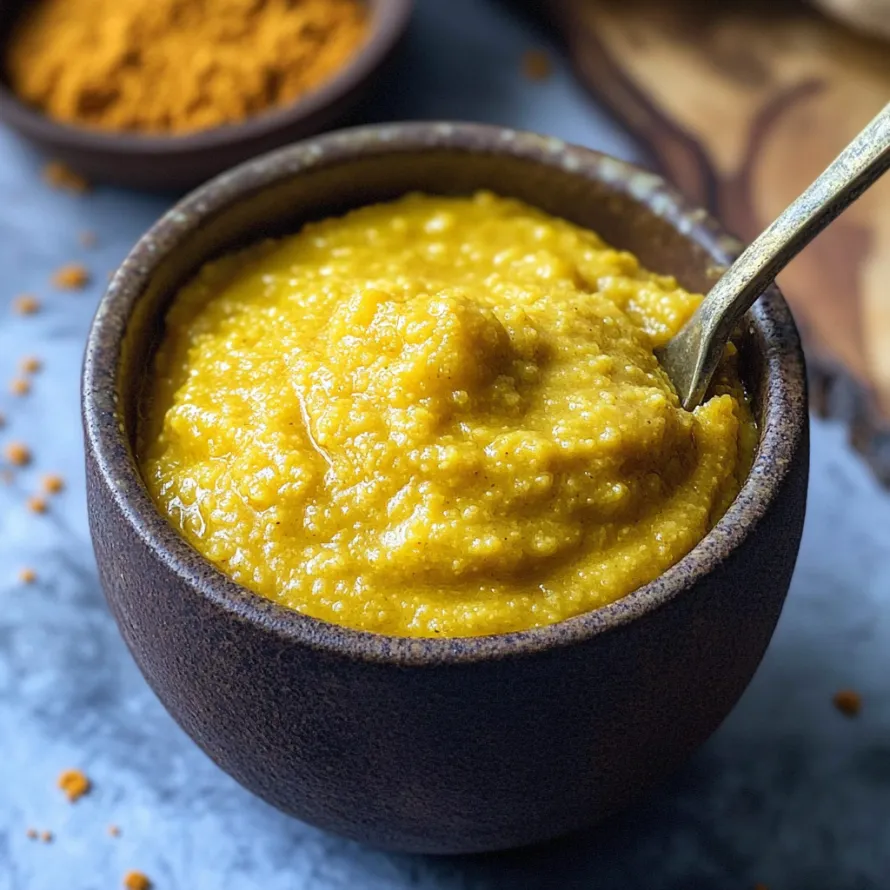 Save
Save
My kitchen-made yellow mustard transforms basic ingredients into a bright, zesty condiment that beats any supermarket variety hands down. I've whipped this up countless times, and everyone asks me what makes my hot dogs and sandwiches taste so much better.
I began creating this mustard after checking the ingredient list on commercial options. These days my family turns their nose up at store versions, and we have fun making different flavors to give away during holidays in cute little jars.
Ingredients
- Yellow mustard powder: Forms your main flavor foundation; splash out on good quality for the tastiest results
- Water: Moistens the powder and gets the texture just right
- Distilled white vinegar: Adds that zingy tang that cuts through mustard's natural sharpness; better vinegar makes better mustard
- Turmeric: Gives that sunshine yellow color we all expect from classic yellow mustard
- Garlic powder: Adds quiet complexity without stealing the show from the mustard
- Salt: Brings out all the flavors and keeps everything balanced
- Cayenne powder: Creates a gentle warm kick; add more or less as you like, or try paprika for a milder version
Step-by-Step Instructions
- Creating Your Mixture:
- Stir mustard powder, water, vinegar and all your spices together in a medium bowl until it's perfectly smooth. Take extra time here to get rid of every tiny lump, as they'll stick around if you don't catch them now. Don't stress if it looks runny – that's exactly how it should be at first.
- Heating It Up:
- Transfer your liquid mix into a wide, non-reactive saucepan. The bigger surface helps water evaporate and speeds up thickening. Heat until it just starts to bubble on medium heat, watching carefully since it can foam up fast. Turn heat down to medium-low right away and let it simmer, stirring often with a wooden spoon or silicone spatula so it doesn't stick.
- Getting It Thick:
- Keep it simmering for 10-15 minutes, giving it a stir about once a minute for even cooking. You'll see it slowly get thicker and the color get more intense. It's done when it coats the back of your spoon similar to regular yellow mustard. Just remember it'll thicken up a lot more after it cools down.
- Finishing Touches:
- Take it off the heat and let it sit in the pan for roughly 10 minutes before pouring into a clean container. As it cools to room temp, the flavor keeps developing and it continues to thicken. Once fully cooled, close it up and put it in the fridge. Wait at least 12 hours before using it so all the flavors can mingle and settle down.

This homemade condiment takes me back to family barbecues at my grandparents' place. My grandfather was super picky about his toppings, and I know he'd give this his stamp of approval. I've found turmeric isn't just for color – it adds a subtle earthiness that makes all the difference.
Flavor Variations
Make the mustard truly yours by tweaking the basic mix. Want honey mustard? Just stir in 2-3 tablespoons of good honey while it's cooking. If you're into beer mustard, swap half the water for a dark beer to add depth. Love some texture? Throw in 2 tablespoons of whole mustard seeds after cooking for a chunky, eye-catching finish.
Troubleshooting Tips
Got mustard that tastes too harsh? A teaspoon of honey or sugar will soften those sharp edges. Too runny? Just pop it back in the pot and cook it longer. Want it silky smooth? Run an immersion blender through it after it cools. Don't worry if it tastes super strong right after making it – give it a couple days in the fridge and the flavor will mellow out beautifully.
Serving Ideas
This mustard works magic beyond hot dogs and sandwiches. Mix it with olive oil and honey for killer salad dressings. Blend it with mayo for the best sandwich spread you've ever had. Combine it with herbs and oil for a quick meat marinade. Going fancy? Mix it with cream cheese for an impressive dip that goes perfectly with pretzels or fresh veggies.

This DIY mustard couldn't be easier to whip up and tastes so amazing it'll make you wonder why you ever bought the packaged stuff.
Common Recipe Questions
- → How long can I keep homemade mustard in the fridge?
Kept in a sealed container, your homemade mustard will last around 2-3 months in the fridge. Thanks to the vinegar, it stays fresh, but using it within a month gives the best taste.
- → What’s the best way to make mustard less spicy?
To tone it down, skip the cayenne pepper or swap it for a mild paprika. For a stronger kick, add extra cayenne or a dash of horseradish powder instead.
- → Why add turmeric to your mustard?
Turmeric amps up the mustard's signature golden-yellow shade! It’s mostly for looks, but you can adjust how much you use depending on how vibrant you want it.
- → Why is my mustard runny?
If your mustard turned out too watery, you probably didn’t simmer it long enough. Cook it a bit more on low heat, stir often so it doesn't burn, and remember it’ll thicken as it cools.
- → Is there a way to make mustard without vinegar?
Vinegar gives mustard its tang and helps preserve it. You can’t skip it, but you can use alternatives like apple cider or white wine vinegars for a different twist.
- → What extras can spice up mustard flavor?
You can experiment by stirring in honey, fresh herbs like dill, some grated lemon peel, or even a shot of beer or whiskey. Adjust slowly to get the flavor you want!
